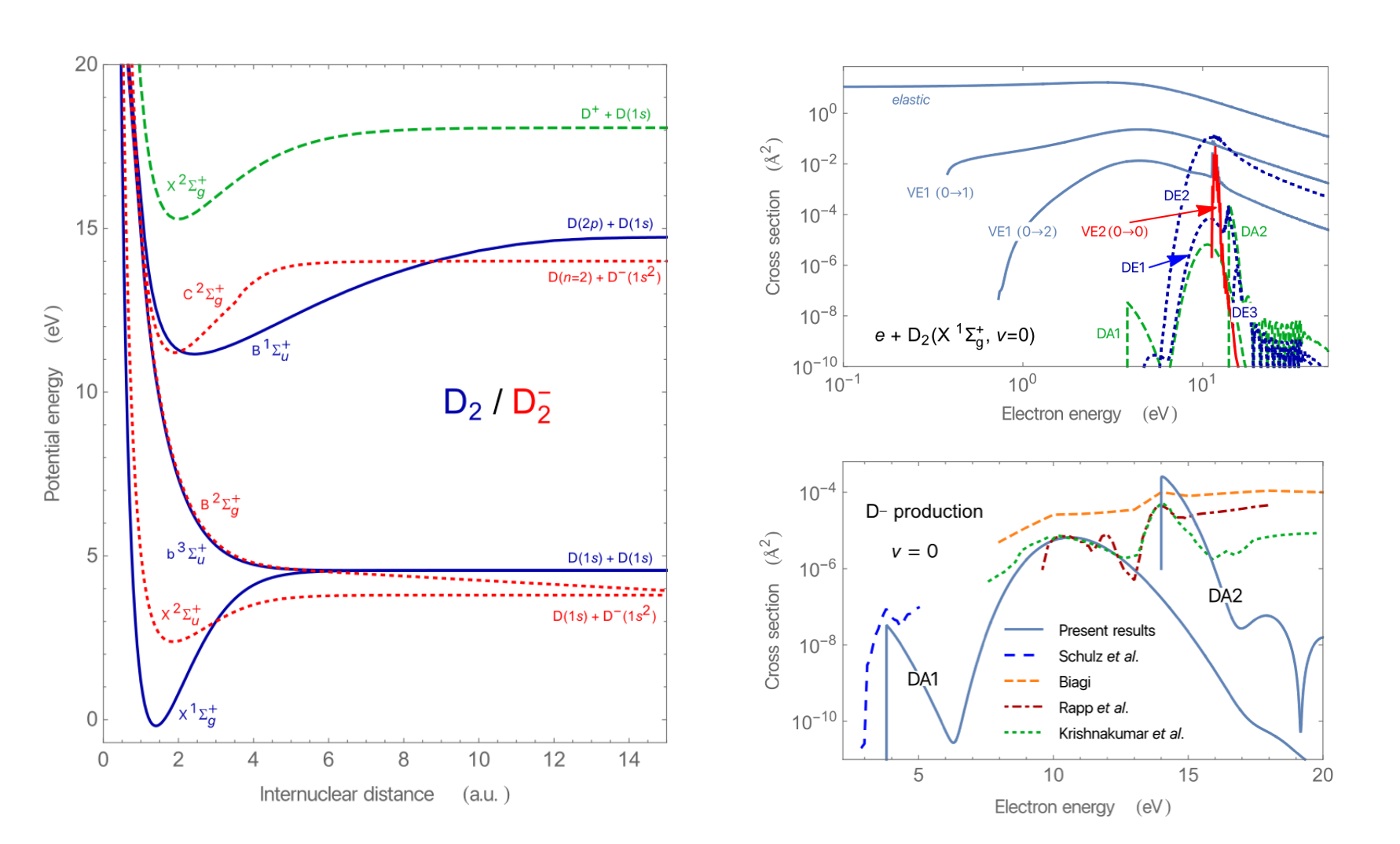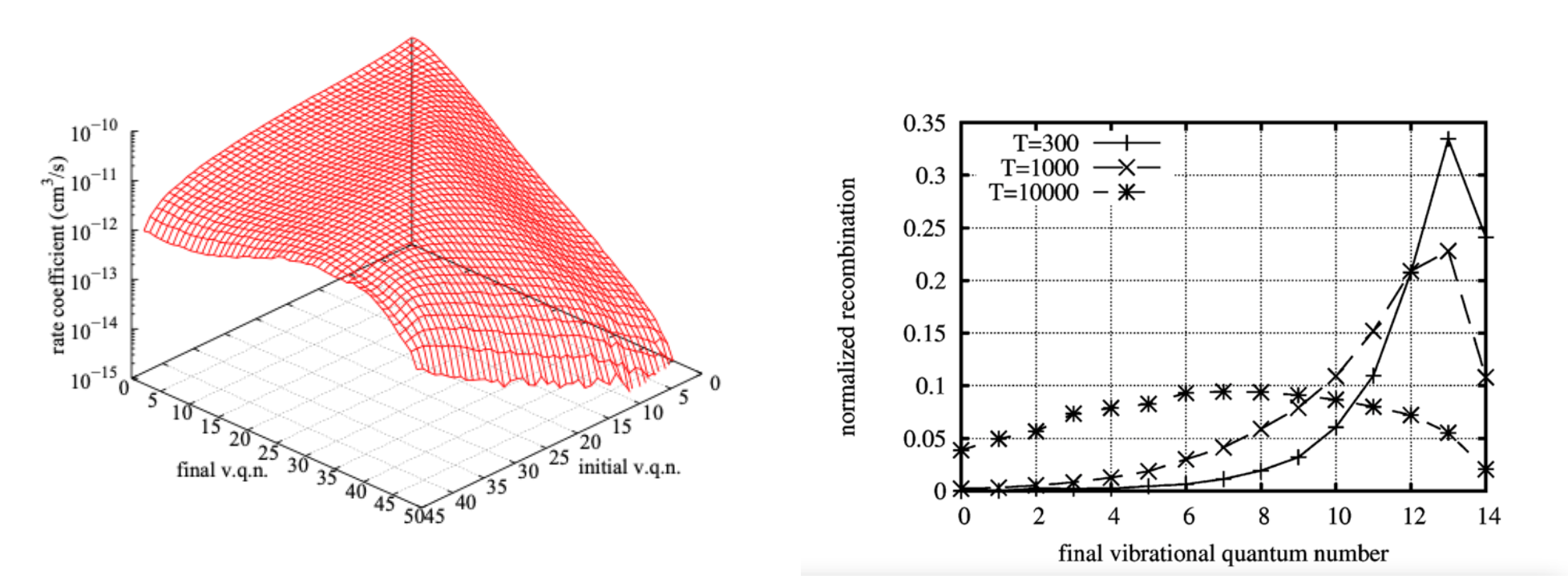Research Groups
Electron-Molecules-Atoms-Surface Group
CNR Bari
Our research focuses on the calculations of elementary processes and transport properties involved in modelling of systems in non-equilibrium thermodynamic.
These results have huge fields of applications. They range from plasma-assisted combustion, spacecraft entry in planetary atmospheres, controlled fusion (JET, ITER …), interstellar medium and prebiotic synthesis of the molecules of life.
Electron-Molecule collisions: We perform calculations of cross sections and rate coefficients for state-resolved molecular dynamics – in the framework of ab initio quantum chemistry approaches – by electron-impact collisions involving vibrationally and rotationally excited molecules and molecular ions. Typical processes we consider are molecular dissociations, vibrational excitations and ionization. Molecular structures, including resonant states and resonance widths, are obtained by using R-matrix method.

Atom-Molecule collisions: We calculate cross sections and rate coefficients for collision processes involving atoms and molecules, with detail about initial and final rovibrational states, on accurate potential energy surfaces by using quasi- and semi-classical methods. The processes treated are internal energy transfer, reaction, dissociation, recombination.

Atom/Molecule interactions with Surfaces: We determine the probabilities for elementary surface processes, reaction energetics and ro-vibrational distributions, global and state-to-state recombination coefficients and energy accommodation coefficients, as well as energy and charge exchange with the surface by time dependent Molecular Dynamics simulations, based on ab initio electronic structure calculations. The considered processes include: adsorption, desorption, scattering, atom recombination, molecular dissociation, ion formation.

Principal Researchers
- Fabrizio Esposito
- Vincenzo Laporta
- Maria Rutigliano
Contact
Dr Vincenzo LAPORTA
Consiglio Nazionale delle Ricerche (CNR/Bari); Via G. Amendola 122/D; 70126 BARI; ITALY
Email: vincenzo.laporta@istp.cnr.it
References
- [1] V. Laporta et al., "Theoretical resonant electron-impact vibrational excitation, dissociative recombination and dissociative excitation cross sections of ro-vibrationally excited BeH+ ion", Plasma Physics and Controlled Fusion 59, 045008 (2017).
- [2] V. Laporta et al., "Vibrational excitation and dissociation of deuterium molecule by electron impact", Plasma Physics and Controlled Fusion 63, 085006 (2021).
- [3] V. Laporta, J. Tennyson and I.F. Schneider, "Vibrationally resolved NO dissociative excitation cross sections by electron impact", Plasma Sources Science and Technology 29, 05LT02 (2020).
- [4] F. Esposito and I. Armenise, "Reactive, Inelastic, and Dissociation Processes in Collisions of Atomic Nitrogen with Molecular Oxygen", The Journal of Physical Chemistry A 125, 3953-3964 (2021).
- [5] Q. Hong et al., "Reconciling experimental and theoretical vibrational deactivation in low-energy O + N2 collisions", Physical Chemistry Chemical Physics 23, 15475-15479 (2021).
- [6] F. Esposito and M. Capitelli, "Selective Vibrational Pumping of Molecular Hydrogen via Gas Phase Atomic Recombination", The Journal of Physical Chemistry A 113, 15307-15314 (2009).
- [7] M. Rutigliano and F. Pirani, "Stereodynamic Effects of CO Molecules Scattered from a Graphite Surface", The Journal of Physical Chemistry C 125, 9074-9084 (2021).
- [8] M. Rutigliano, A. Palma and N. Sanna, "Influence of incidence angle on hydrogen and deuterium atoms interaction with a cesiated surface", Surface Science 693, 121545 (2020).
- [9] M. Rutigliano, A. Palma and N. Sanna, "Vibrationally excited hydrogen molecules formation on a cesiated surface", Plasma Sources Science and Technology 27, 075014 (2018).